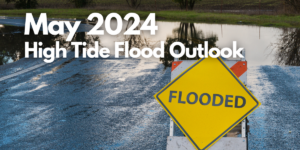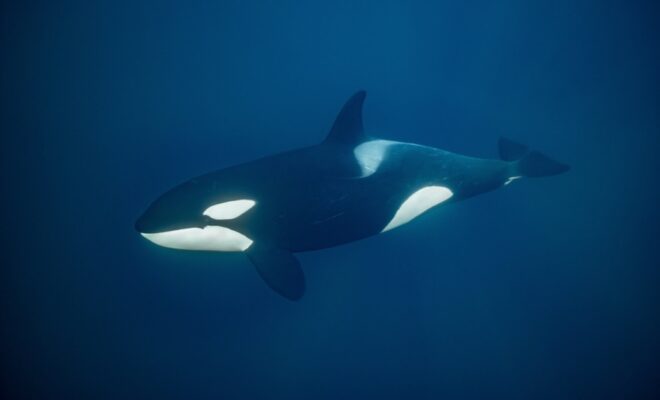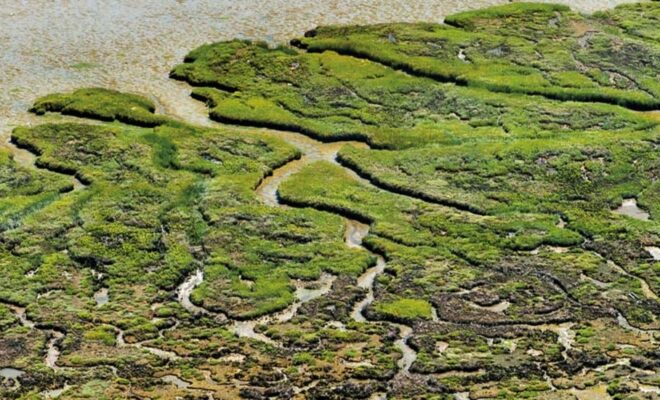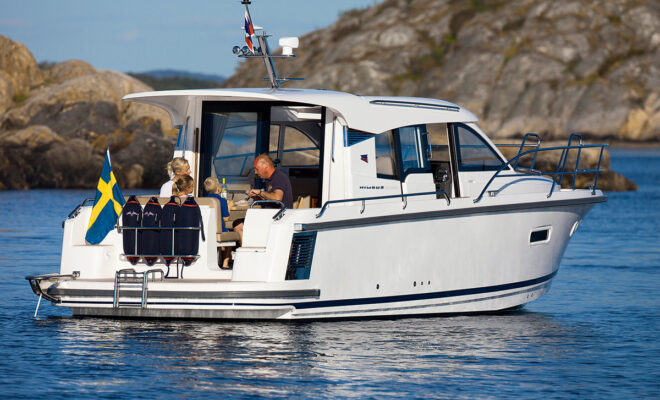General and small-craft anchorages extend up Lafayette River to the first bridge. A yacht club is just below the north end of the bridge.
Knitting Mill Creek, is on the south side of Lafayette River about 3 miles above the mouth. In 2010, the controlling depth was 4.6 feet to near the head of the project. Some supplies, gasoline, and berths are available within the creek. Repairs can be made; largest marine railway, 40 feet; lift, 10 tons.
A 540-foot lighted pier about 1 mile above the entrance to Western Branch extends to the northern edge of the marked channel; mariners are advised to use caution in the area. A fixed highway bridge, about 1.2 miles above the entrance, has a clearance of 45 feet.
West Norfolk, northward of the fixed bridge, has a shipyard and small-craft facilities. Supplies, fuel, and slips are available. Repairs can be made; largest marine railway, 220 feet.
Scott Creek (36°51.1’N., 76°18.5’W.), on the southwest side of Elizabeth River, 7.3 miles from Sewells Point, is entered through a channel marked by daybeacons. In 2008, the controlling depth was 4.9 feet (6.8 feet at midchannel) to Daybeacon 5, thence 2.6 feet (3.5 feet at midchannel) to the head of the project. The channel leads to old fishing wharves now used by pleasure craft. A marina with a 60-ton lift is on the S side of the creek about 0.4 mile above channel entrance. A marina is on the point on the south side of the creek, about 0.9 mile above the channel entrance, and had a reported depth of 4 feet in the approach and alongside the piers. Berthage, electricity, water, ice, towing, launching ramp, a 40-foot marine railway, and a 30-ton lift are available; hull, engine, and electrical repairs can be made.
Smith Creek, opposite Hospital Point 7.5 miles from Sewells Point, has entrance depths of about 3 feet with deeper water inside, but the entrance is restricted by a 48-foot-wide fixed highway bridge with a clearance of 13 feet. Small-craft anchorages are in Smith Creek.
Waterside is in the downtown area of Town Point, on Norfolk, the north side of the intersection between Elizabeth River and Eastern Branch. A municipal marina at this popular tourist stop has reported depths of about 16 feet at the entrance, inside the marina, and alongside the berths. Transient berths are available year-round. A sewage pump-out station is at the marina. Electricity is at the berths; ice and provisions are available nearby. The marina staff monitors VHF-FM channels 16 and 68.
Navigation:
Click the “Map View” button above to see a chart of this harbor.
Hampton Roads, at the southwest corner of Chesapeake Bay, is entered 16 miles westward of the Virginia Capes. It includes the Port of Norfolk, encompassing the cities of Norfolk, Portsmouth, and Chesapeake, and the Port of Newport News, which takes in the cities of Newport News and Hampton.
Two main Federal project channels, marked by buoys, lead through Hampton Roads. One channel leads southward along the waterfronts of Norfolk, Portsmouth, and Chesapeake to the first bridge across the Southern Branch of Elizabeth River; project depths are 50 feet through Norfolk Harbor Entrance Reach; thence 55 feet through Craney Island Reach at Lamberts Point; thence 40 feet to the bridge.
Norfolk Harbor comprises a portion of the southern and eastern shores of Hampton Roads and both shores of Elizabeth River and its Eastern, Southern, and Western Branches, on which the cities of Norfolk, Portsmouth, and Chesapeake are located.
The main part of Norfolk is on the east side of Elizabeth River north of Eastern Branch, with Berkley, a subdivision, to the southward between Eastern and Southern Branches. South of Berkley is the city of Chesapeake. Portsmouth is opposite Norfolk, and its waterfront extends along the west shore of Southern Branch and the south shore of Western Branch. These cities form practically a single community, united by the same commercial interests and served by the same ship channel.
Sewells Point (36°57.8’N., 76°19.6’W.), on the east side of the entrance to Elizabeth River has a breakwater, marked by a light on its outer end, extends about 0.3 mile westward from the point. The piers of the Norfolk Naval Base and its annex extend southward from the breakwater along the east bank of the river. General depths at the naval piers are 30 to 50 feet. A jettied basin at the naval base, 0.6 mile south of Sewells Point, affords protection for navy service craft in depths of 21 to 29 feet. The approach to the naval piers is a restricted area.
The Lafayette River empties into the east side of Elizabeth River 4 miles south of Sewells Point. The river, used exclusively by pleasure and recreational craft, is entered by a marked dredged channel between Tanner Point and Lamberts Point, 1.5 miles to the southward. A light, 0.6 mile south of Tanner Point, marks the channel entrance. The dredged channel leads for 1.1 miles to a point about 0.3 mile westward of the Hampton Boulevard Bridge. From this point, a marked natural channel leads for about 2.4 miles to where the river divides into two forks. In 2010, the controlling depth was 8 feet in the dredged section, thence 6 feet to the forks; thence in 2003, 2 to 3 feet up each fork; the chart is the best guide. The dredged channel turns sharply at the light off Lawless Point, a mile above the entrance, and vessels must be on the alert to avoid grounding.
Hampton Boulevard Bridge, 1.5 miles above the entrance to Lafayette River, has two fixed channel spans with a clearance of 24 feet. Granby Street Bridge, 3.5 miles above the entrance to Lafayette River, has a 40-foot fixed span with a clearance of 22 feet. East Haven, on the south side of Lafayette River about 3.5 miles above the mouth, has a dredged channel that leads to a settling basin and boat ramp at the head. In 2010, a controlling depth of 2.2 feet was in the channel to just below the head of the basin under construction.
Western Branch (36°52.0’N., 76°19.7’W.) empties into the southwest side of Elizabeth River 5.8 miles south of Sewells Point and 23.8 miles from the capes. A marked channel leads from the main channel in Elizabeth River for 4.5 miles upstream. In 2007, the controlling depth was 17.1 feet (17.9 feet at midchannel) in the dredged channel to the first bridge, thence 16.3 feet (17.9 feet at midchannel) to the head of the project about 0.25 mile above the first bridge; then in 1980, about 7 feet could be carried to Drum Point, 0.5 mile above the third bridge.
Eastern Branch (36°50.5’N., 76°17.6’W.) empties into the east side of Elizabeth River 8 miles from Sewells Point. A Federal project provides for a channel 25 feet deep to the Norfolk Southern Railway Bridge, 2.5 miles above the entrance.
Downtown Norfolk is on the north side of Eastern Branch, and Berkley, a subdivision, is on the south side. Traffic is fairly heavy as far as Campostella Bridge. Depths at most of the piers on both sides of the branch range from 14 to 25 feet.
The highway bridge, 0.4 mile above the entrance to Eastern Branch, has a bascule span with a clearance of 48 feet. The Norfolk Southern Railway Bridge, 1 mile above the entrance, has a bascule span with a clearance of 4 feet. An overhead power cable 200 yards east of this bridge has a clearance of 150 feet.
Campostella Bridge, 1.4 miles above the entrance to Eastern Branch, has a fixed span with a clearance of 65 feet. The Norfolk Southern Railway Bridge, 2.5 miles above the entrance, has a swing span with a clearance of 6 feet.
Southern Branch, the continuation of Elizabeth River south of the junction with Eastern Branch, is a part of the Intracoastal Waterway route southward to Albemarle Sound.




